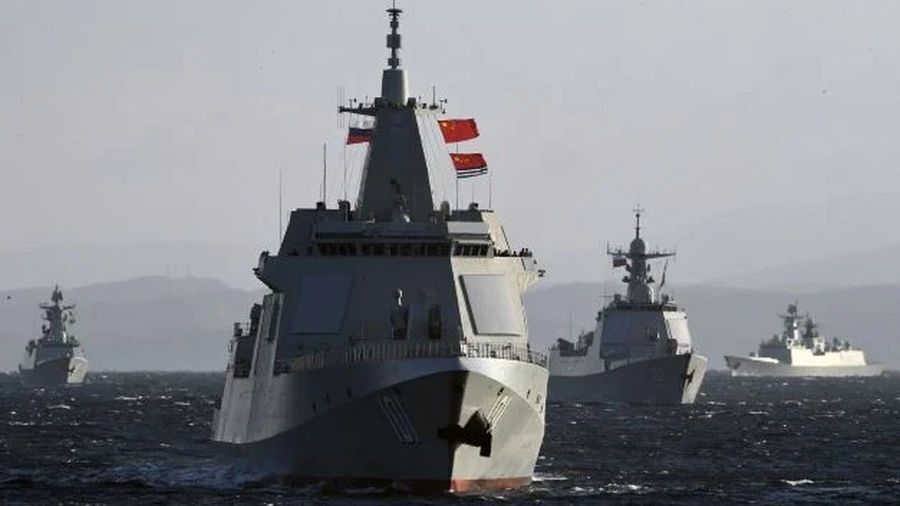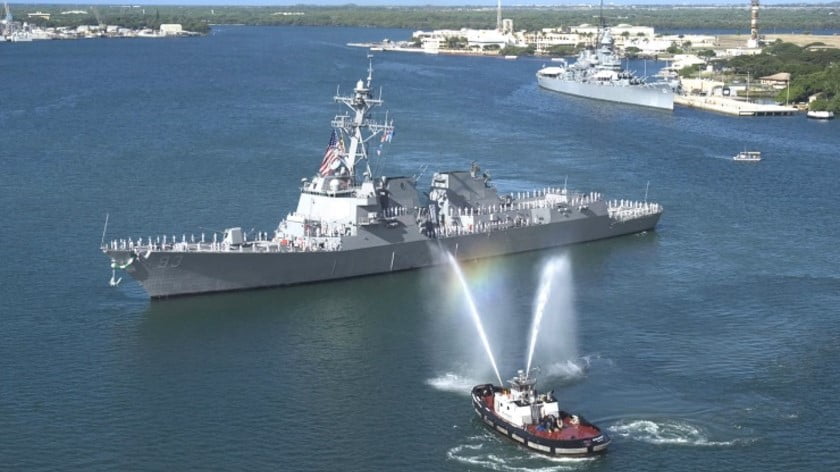Russia-China Conduct Joint Naval Exercises in Response to AUKUS/QUAD Provocations
Interactions between the Russian and Chinese navies have special significance after the US, UK and Australia indirectly announced their aim to put pressure on both countries and turn the Asia-Pacific region into an Anglo lake. Facing an unprovoked threat, Moscow and Beijing are demonstrating their cooperation to jointly protect their interests against foreign provocateurs.
Russian and Chinese naval ships for the first time in history passed through the Tsugaru Strait between Honshu and Hokkaido in northern Japan, which connects the Sea of Japan with the Pacific Ocean. The two navies carried out joint training and tactical exercises. During the voyage, the ships covered more than 1,700 nautical miles.
For many years, the US Navy and its allies have conducted unilateral or multilateral patrols in international waters. In recent years, the Chinese Navy has also coordinated with partners, such as the Vietnamese Navy to conduct a number of joint patrols in the Gulf of Tonkin where the two countries share a common maritime border that has been demarcated in an agreement since 1999. The Vietnamese Navy also coordinates with the Cambodian and Thai Navies to conduct joint patrols in some areas in the Gulf of Thailand.
From the Russian and Chinese perspective, the recent joint naval exercise is a message that both countries want to send to AUKUS and their peripheral allies. The joint exercises took place in the context of the US and its NATO allies increasing anti-Russian activities, such as military exercises close to the Russian border. This has caused diplomatic issues, with Moscow suspending the work of its official mission to NATO in Brussels.
In the East, the US, along with its fellow Anglo allies Britain and Australia, signed the AUKUS treaty, forming an alliance to contain China in the Western Pacific and Indian Oceans. AUKUS is also alongside the QUAD formation that comprises of the US, Japan, India, and Australia. Due to the emergence of AUKUS and QUAD, Beijing and Moscow are finding that their partnership must have a stronger military element if they want to be able to push back Washington-instigated aggression. This too of course is especially important for Russia as it mostly faces pressure from its Western borders, and will certainly not want a new pressure front on its East.
Talking about a close military alliance between Moscow and Beijing at this point may be premature though. Although the US and its allies have not yet made a definite military move against both countries, the unusual increase in naval activities in the Western Pacific has forced both countries to take action. The fact that the Russian-Chinese joint patrol took place right after the “Sea Cup” competition, which had the participation of Vietnam, Russia, China, Azerbaijan, Iran, Myanmar, and Kazakhstan and was within the framework of the “Army Games 2021”, signals that they want to warn their adversaries that they are fully prepared to take action to defend their sovereignty.
The joint Russian-Chinese maneuvers are also a signal to Washington that its policy of attempting to manipulate Russia against China or enticing China against Russia, like Richard Nixon did during the Vietnam War years, is impossible. However, it is not excluded that if the US and the West continue to increase their hostile activities against Russia and China, causing more tension, Moscow and Beijing could increase the level of their political and military links to “eliminate threats” emanating from common adversaries.
The AUKUS bloc was created to put pressure on China in the Asia-Pacific region, but it can easily extend to include Russia’s East. In such a situation, it is important to demonstrate that Moscow and Beijing are willing to cooperate and jointly protect their interests. The joint patrol by the Russian and Chinese fleets in the Pacific Ocean is one form of that.
By also sailing through the Tsugaru Strait, Russia and China are also sending a warning to Japan that they will utilize every advantage available if AUKUS or QUAD escalate tensions. Tokyo only claims three-nautical miles in the Tsugaru Strait instead of a 12-nautical mile maritime boundary as permitted by international law. This situation emerged during the Cold War so that US nuclear-armed vessels could pass through the strait, cutting travel time between the Pacific Ocean and Sea of Japan without violating Japan’s “Non-Nuclear Principles.” Japan does not permit nuclear weapons on its territory, including its maritime space.
However, this arrangement also means that all navies from across the world can pass through the Strait, therefore coming within touching distance of Honshu and Hokkaido islands. Whilst Japan is a willing participant of the anti-China QUAD formation and will surely assist AUKUS in their activities, they have left themselves vulnerable just for the sake of accommodating US nuclear vessels.
With the Pacific region heating up as the Anglo alliance continues to pressure Russia and China, both countries are now making bold steps to demonstrate that they are more than willing to defend their sovereignty, so-much-so that they will conduct joint exercises together in not only a show of force, but to also expose the vulnerability of Japan.







